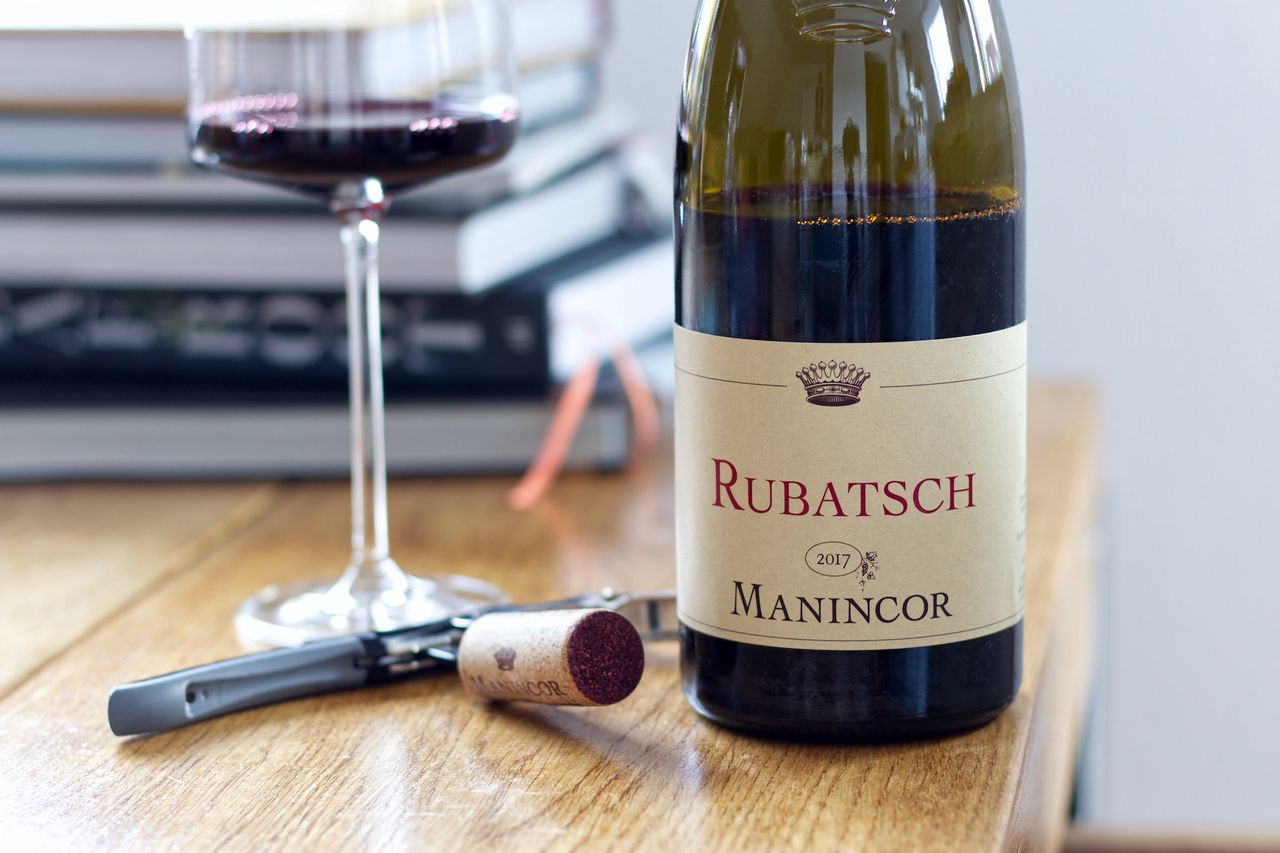Manincor - Rubatsch 2017
We drink a Rubatsch 2017 from Manincor in South Tyrol.

The wine world is big and I’m just scratching the surface here. I realized this again after I noticed that not a single bottle of wine from Italy has appeared here so far. Especially since Italy is not really exotic, but one of the most important wine-growing nations in Europe and in Germany the largest country of origin for wine imports in terms of volume. It’s probably the case that mass production prosecco or delivery service primitivo don’t offer what I’m looking for in wine, but there are more than enough exciting bottles in the gigantic amount of Italian wines. So it’s time to tackle it. We’ll start in South Tyrol. In South Tyrol, about two-thirds of the vineyards are worked by cooperatives. In contrast to Württemberg, for example, these enjoy a much better reputation there, and many great wines are produced cooperatively. The Manincor winery also used to supply grapes to the cooperative. Only since 1996 have the wines been vinified in their own cellars. The grapes for the Rubatsch we have in the glass this time come about two-thirds from Rubatsch Terlan, located northwest of Bolzano, and one-third from the Seehof vineyard in Caldaro, located south of Bolzano on Lake Kaltern. The wine is made entirely from Lagrein, an autochthonous grape variety, which means it is native to the area. The vineyards are farmed organically, the grapes are fermented spontaneously in wooden vats and then aged in barrique with a small proportion of new barrels.
As always, we try a sip right after pulling the cork. Lots of cherry pours from the glass, deep red, ripe, plus some balsa wood and licorice. In the background we have cranberries and an idea of lavender. Lots of freshness found not only on the nose but also on the tongue. The tannin is fine, the acidity is lively and the berry fruit comes through fully as well. In between, so much so that the wine seems almost sweet. Already the first sip becomes more intense in the glass. This continues throughout the evening. Vanilla comes in and the Lagrein clearly gains structure in the mouth and density in the aroma.
The cherry remains overnight, but much of the fruit now tends toward blue or purple. The wine has become more harmonious and now feels round and balanced. The 14 percent alcohol is perfectly integrated and not at all noticeable, the nose is carried by fine spice, plus the fruit and licorice. As on the first evening, the wine continues to gain quality with air in the glass and condenses in its aromatics. We had decided against a decanter and left the wine in the bottle. We are having fun, so that was not a mistake, but the development in the glass suggests that the Lagrein on the one hand should still make significant steps forward in the next few years and on the other hand a carafe could help to kick off the development not only in the glass but already before pouring into the glass. Regardless, the Rubatsch pleases too well, which ends the tasting journey here, even if another night of time would certainly have brought another development. As I said, it does not matter, because we had a lot of fun with it.